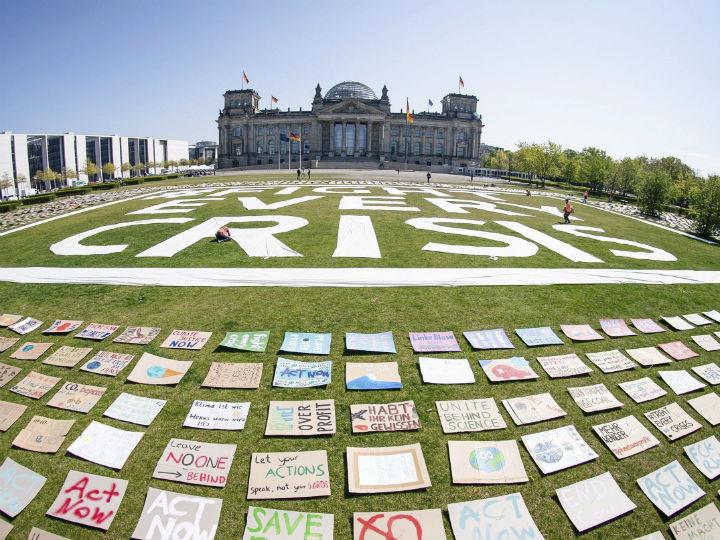by Edward Barbier*
Economists believe that we are in the midst of a “reverse radical” recovery. This economic trajectory is the mirror image of the square-root symbol: a steep economic decline, followed by a sharp partial rebound, then a slow recovery over several years.
How we manage the post-pandemic recovery will be critical to the type of future we want and need. Simply reviving the existing “brown” economy will exacerbate irreversible climate change and other environmental risks. As The Economist reminds us, the COVID-19 and climate crises are connected, so both curves need to be “flattened” as we rebuild the world economy. Consequently, the post-pandemic recovery offers a unique opportunity to decarbonize the world economy through affordable and workable policies in order to usher in a more sustainable economy.
I have outlined such a strategy for the Group of 20 (G20), the world’s richest and largest economies. These economies are crucial to greening the global recovery. They comprise nearly two-thirds of the world’s population and land area, 82% of world GDP and 80% of global CO2 emissions. The G20 also dominate the “green race” for environmental competitiveness and innovation in key global industries, such as machinery, motor vehicles, engines and turbines, steam generators, iron and steel, batteries, electricity generation and distribution, and domestic appliances.
A good place to start is learning what worked and what did not from previous efforts by the G20 to green the economic recovery during the Great Recession of 2008-9.
During the Great Recession, almost the entire global green stimulus was by the G20 economies. They devoted nearly 16% of their total fiscal stimulus to “green investments”, such as low-carbon energy, energy efficiency, pollution abatement and materials recycling. In fact, just four economies – China, the United States, South Korea and Japan - accounted for around 85% of the global green stimulus over 2008-9.
The green stimulus packages enacted during the Great Recession followed the general recommendation for all fiscal stimulus packages; that is, that they be “timely, targeted and temporary”. Two thirds of the global green stimulus ($335 billion) went to improving energy efficiency, with an aim to create much-needed jobs in sectors hard-hit by the Great Recession, such as construction. The emphasis on energy-efficiency spending, and “shovel-ready” clean energy projects, did impact job creation and expansion of renewables for several years, but provided little long-term support for de-carbonizing G20 economies.
However, policies for a sustained economic recovery amount to much more than just short-term fiscal stimulus of one-to-two years. Instead, transitioning from fossil fuels to a low-carbon economy will require long-term commitments (five to 10 years) of public spending and pricing reforms. The key investments include public spending to support private sector green innovation and infrastructure, to fund natural climate solutions, and to develop smart grids, mass transit systems, and charging station networks. Pricing carbon and pollution, and removing fossil-fuel subsidies, can accelerate the transition, raise revenues for the necessary public investments, and lower the overall cost of the green transition.
Any long-term policy for greening the recovery must not only be workable but affordable. G20 economies have already spent more than $8 trillion, or 4.5% of their GDP, to combat the economic and health crises caused by the pandemic. Deficit spending is warranted to boost overall demand for goods and services when an economy is in a sharp decline; unemployment rises, consumer spending falters and private investment is down. But long-term investments over five-10 years in a sustainable recovery need to be funded and cost-effective. This is where pricing reforms, such as removal of fossil fuel subsidies and taxing carbon, can help pay for the additional spending required for a greener recovery.
The persistent underpricing of fossil fuels is also the most significant deterrent to green structural transformation and innovation in G20 economies. As the figure below indicates, IMF researchers estimate that subsidies and the failure to include the carbon, environmental and health damages of fossil fuels cost 16 G20 economies around $3.2 trillion annually, which accounts for 70% of the global underpricing of fossil fuels. In China, underpricing amounts to over $1.4 trillion each year, the United States nearly $650 billion, Russia over $550 billion, India almost $210 billion and Japan over $175 billion. Such underpricing means that there is not a level playing field between fossil fuel and clean energy investments in G20 economies, as fossil fuels do not face the full social and economic costs of their development and use.
Pricing reforms would also save or generate additional revenue for clean energy and other long-term investments needed for a sustained green recovery. The IMF estimates that ending the underpricing of fossil fuels would generate $2.8 trillion in fiscal revenues globally each year. Based on this calculation, I estimate that the G20 economies could raise $1.94 trillion annually, or around 3.7% of their aggregate real GDP.
The upshot is that the combination of fossil fuel subsidy removal and carbon and other environmental taxes could correct market disincentives that deter de-carbonization, as well as provide revenues for five-10 years of necessary expenditure on public support for green innovation and key infrastructure investments in G20 economies.
Expenditures targeted at clean energy research and development will lead to lower costs and wider adoption, as the technology becomes more familiar, innovation spreads, and production scales up. There is also a network, or “chicken and egg”, effect, whereby increasing demand for a clean-energy technology or product fosters related innovations that lower cost. For example, purchases of electric vehicles will stimulate demand for charging stations, which once installed will reduce the costs of running electric vehicles and further boost demand.
Public investments are needed to design and construct a “smart” electrical grid transmission system that can integrate renewables. Another necessity is urban development policies that combine municipal planning and transport policies to foster more sustainable cities. Finally, public investment in mass transit systems, both within urban areas and major routes connecting cities, has been a long-neglected aspect of public infrastructure development. These and other areas of possible long-term investments for a green recovery are important areas for future research.
*University Distinguished Professor, Department of Economics, Colorado State University
**first published in: www.weforum.org




 By: N. Peter Kramer
By: N. Peter Kramer
